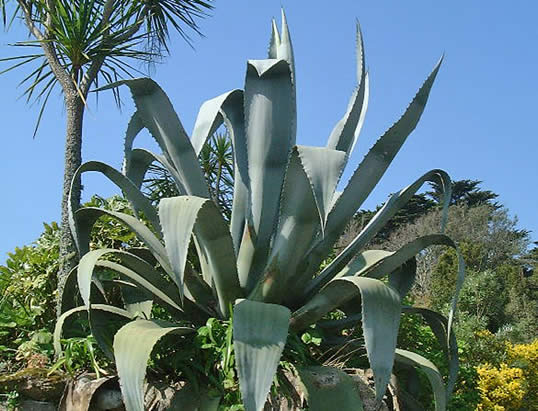
Latin name: Agave Americana
Description: Only in resent years has it been considered possible to grow spiky desert plants in our temperate gardens, but now with warmer winters very much in mind, many garden centres are now stocking some of these fabulously spiky plants. Agave americana is one of the most dramatically architectural plants available and well worth trying. In this case, size matters – the larger the plant the hardier it is, hence specimens over 90cm tall will have a better chance of survival. Each heavy, thick, leaf gently curves from the base in a shade of matt bluish-grey, edged and with vicious spines – beware these plants bite!
Hardiness: Hardy to about -4C if planted on ludicrously well drained soil. If protected from winter rains, they will take a few more degrees of frost
Height: Up to 1.5
Position: Full sun
Soil: Ludicrously well drained soil with added sand and gravel or grit
Water: Exceedingly drought tolerant – our problem is too much rain!
Usage: For dramatic effect in a sun baked part of the garden. They are also excellent in large containers that can be moved into frost free conditions for the colder months of the year









Thu, Apr 10, 2008
Architectural